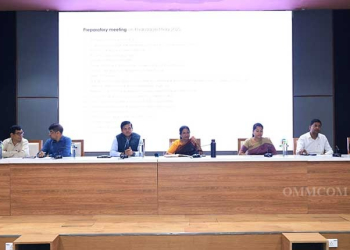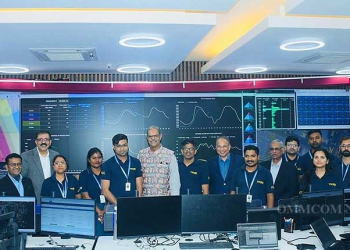Bhubaneswar: Ushering in a new technological era, Prime Minister Narendra Modi today launched the 5G services. With this landmark achievement, India’s digital connections will become much faster, paving way for greater productivity and innovation in almost every industry. 5G technology will provide seamless coverage, high data rate, low latency and highly reliable communications, besides increasing energy efficiency, spectrum efficiency and network efficiency.
Here is a detailed look at how 5G is going to reform the digital connectivity space of India.
5G technology has a theoretical peak speed of 20 Gbps, while the peak speed of 4G is only 1 Gbps. 5G also promises lower latency, which can improve the performance of business applications as well as other digital experiences (such as online gaming, videoconferencing, and self-driving cars).
While earlier generations of cellular technology (such as 4G LTE) focused on ensuring connectivity, 5G takes connectivity to the next level by delivering connected experiences from the cloud to clients. 5G networks are virtualized and software-driven, and they exploit cloud technologies.
The 5G network will also simplify mobility, with seamless open roaming capabilities between cellular and Wi-Fi access. Mobile users can stay connected as they move between outdoor wireless connections and wireless networks inside buildings without user intervention or the need for users to reauthenticate.
5G technology should improve connectivity in underserved rural areas and in cities where demand can outstrip today’s capacity with 4G technology. New 5G networks will also have a dense, distributed-access architecture and move data processing closer to the edge and the users to enable faster data processing.
5G technology will introduce advances throughout network architecture. 5G New Radio, the global standard for a more capable 5G wireless air interface, will cover spectrums not used in 4G. New antennas will incorporate technology known as massive MIMO (multiple input, multiple output), which enables multiple transmitters and receivers to transfer more data at the same time. But 5G technology is not limited to the new radio spectrum. It is designed to support a converged, heterogeneous network combining licensed and unlicensed wireless technologies. This will add bandwidth available for users.
5G architectures will be software-defined platforms, in which networking functionality is managed through software rather than hardware. Advancements in virtualization, cloud-based technologies, and IT and business process automation enable 5G architecture to be agile and flexible and to provide anytime, anywhere user access. 5G networks can create software-defined subnetwork constructs known as network slices. These slices enable network administrators to dictate network functionality based on users and devices.
The advent of 5G is going to change the way businesses operate and the way people live, work and play. The future of connectivity involves a dramatic evolution for businesses as a virtually unlimited number of things can be connected. The newest frontier technologies, such as AI, AR/VR, Cloud, edge, Internet of Things (IoT), robotics etc, will get a big boost with the coming of 5G.
In healthcare, 5G technology and Wi-Fi 6 connectivity will enable patients to be monitored via connected devices that constantly deliver data on key health indicators, such as heart rate and blood pressure.
In the auto industry, 5G combined with ML-driven algorithms will provide information on traffic, accidents, and more; vehicles will be able to share information with other vehicles and entities on roadways, such as traffic lights. These are just two industry applications of 5G technology that can enable better, safer experiences for users.
To be launched in select cities, 5G will progressively cover the entire country over the next couple of years.





















